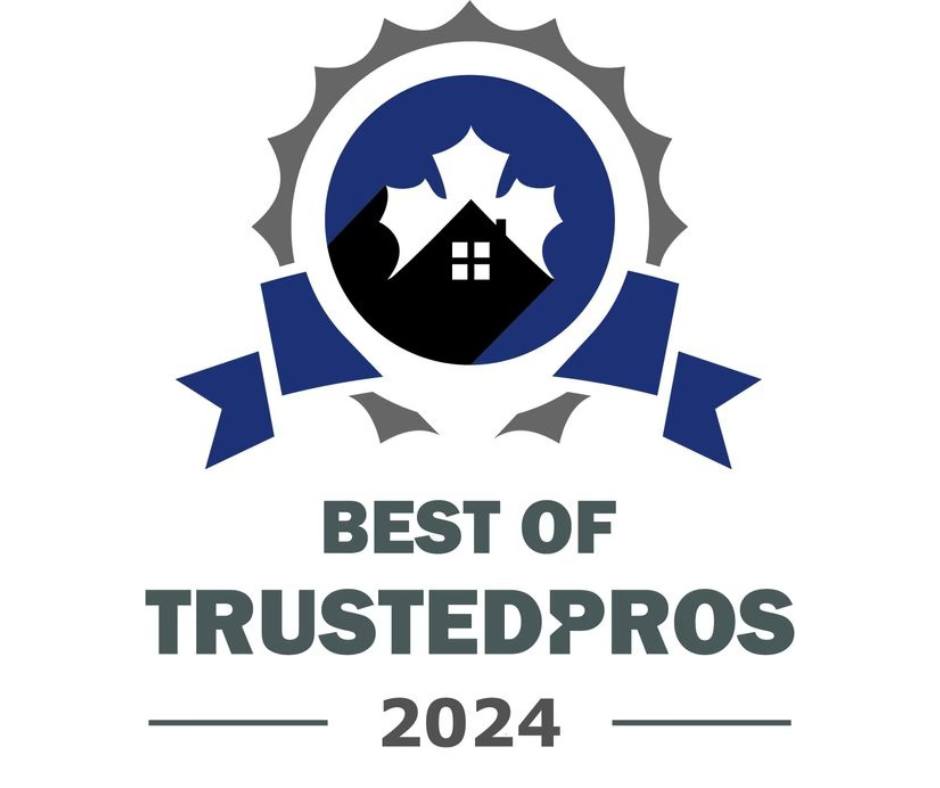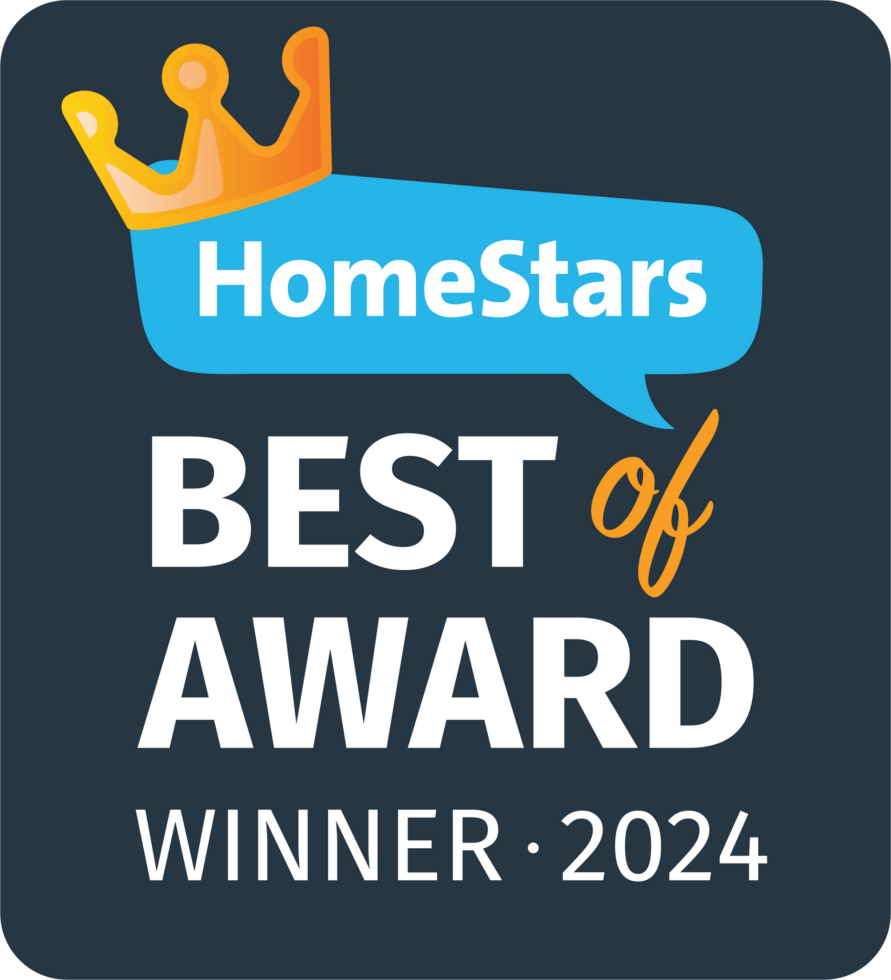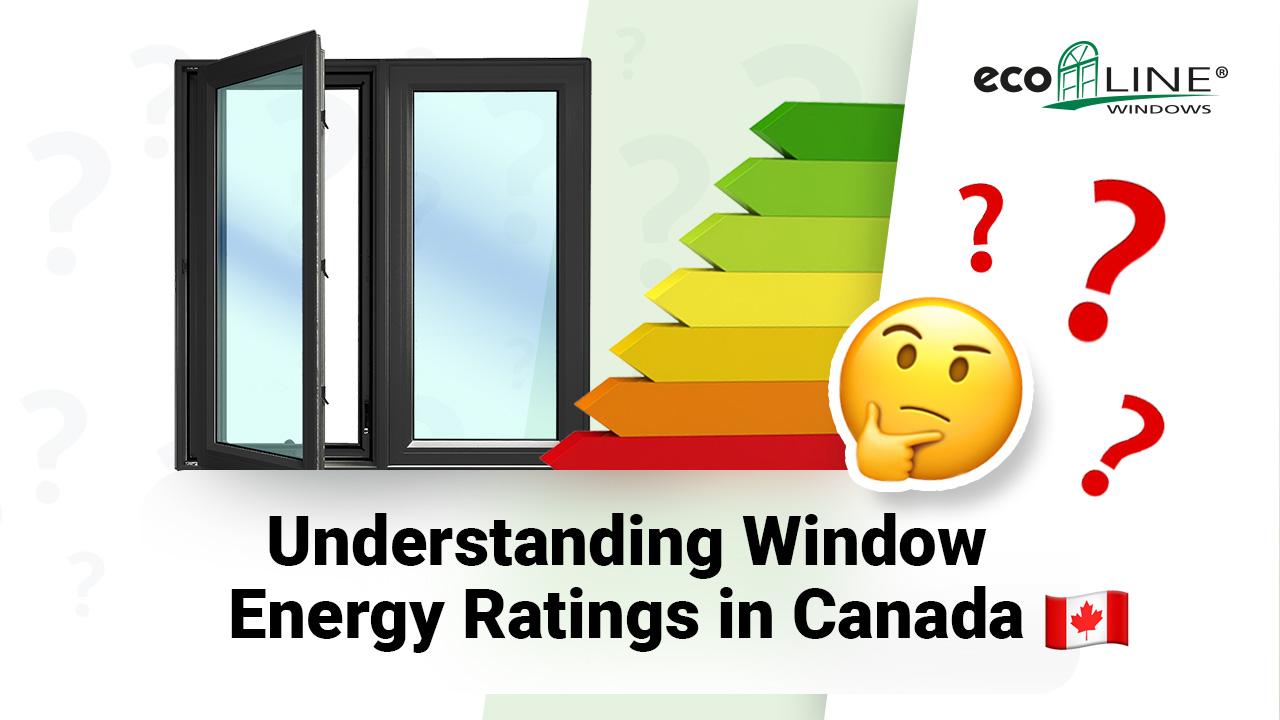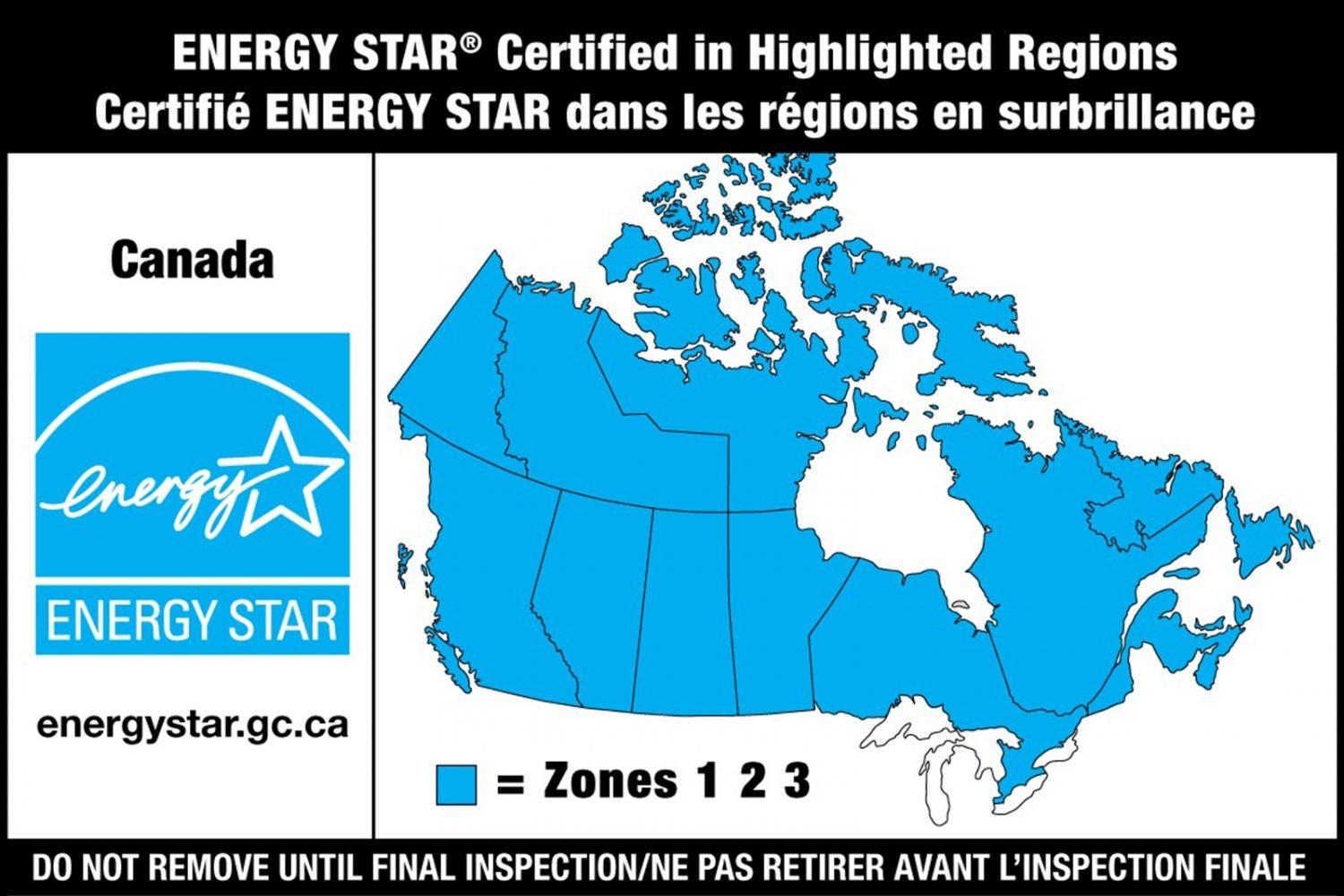

2025 Guidelines for ENERGY STAR® Certified Windows, Doors and Skylights
Feb 20, 2025
11 min read
468
If you’re like the majority of Canadian homeowners, you’ve probably heard of ENERGY STAR® as it relates to efficiency ratings for major appliances but may not be aware that there are also guidelines for windows, doors and skylights.
The 2025 Guidelines for ENERGY STAR® certified windows, doors and skylights have been released, but what do they mean for you?
Ecoline Windows team has put together some specifics about the program, how to choose products that qualify as ENERGY STAR®, and what you specifically need to pay attention to when purchasing replacement windows, doors and skylights.
Why Choose ENERGY STAR®-Certified Windows and Doors?
While the ENERGY STAR program was developed in 1992 as a voluntary means to reduce energy consumption without the government instituting laws to enforce it, many manufacturers have stepped up to enhance their products to meet these high-efficiency standards.
Windows, doors and skylights with this designation meet quality standards for efficiencies that help reduce greenhouse gas emissions and energy use to save you money on utility bills.
Energy-efficient windows and doors can help reduce heat loss and drafts in the cold winter months and heat gain in the hot summer months. By maintaining a consistent temperature throughout the year, your home will be more comfortable.
With repeated exposure to sunlight, your furniture, draperies, photographs and even wood floors can fade or discolour. ENERGY STAR®-certified products with Low-E coatings can protect your home’s interior from damaging UV rays.
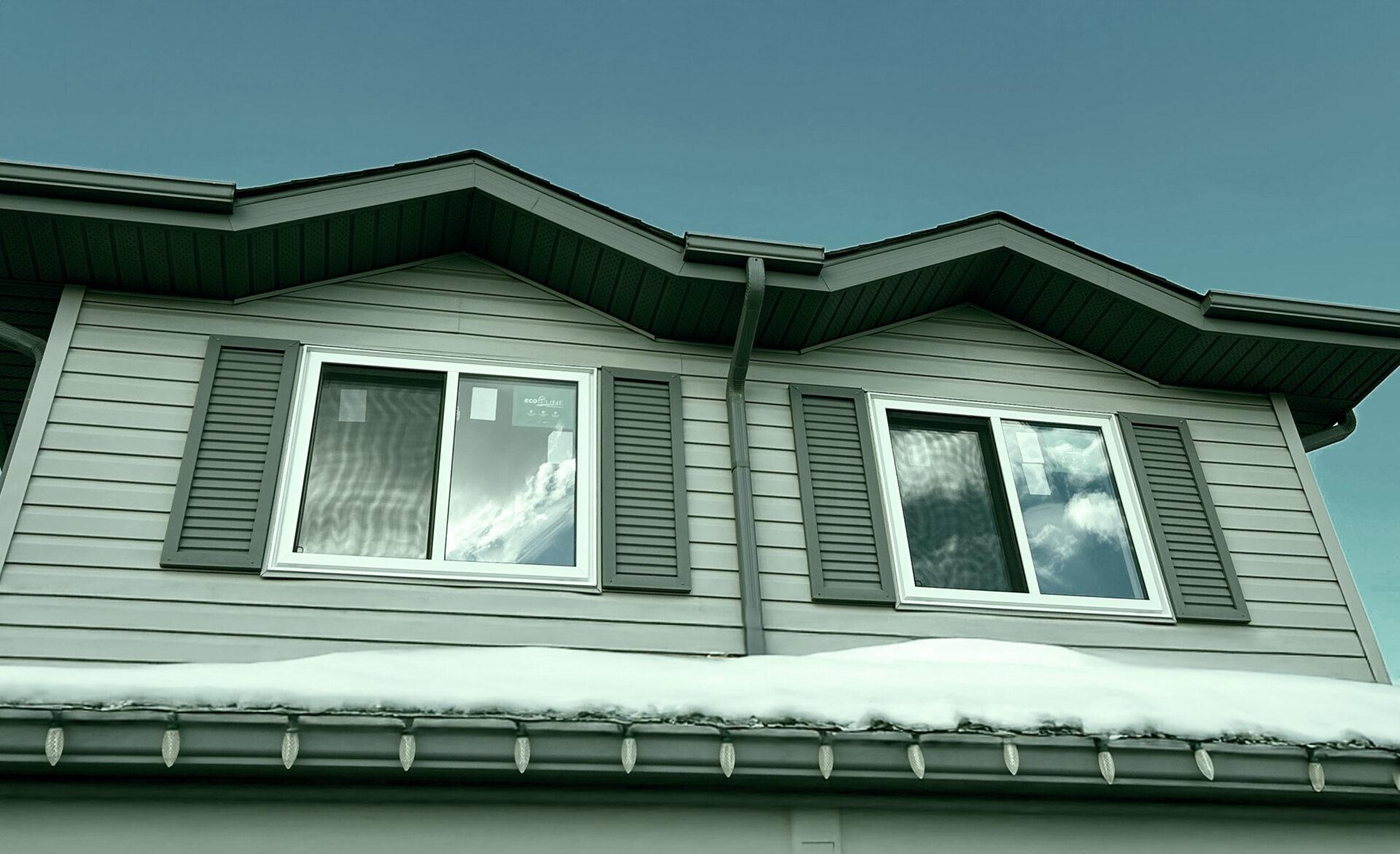
Who Regulates ENERGY STAR® Specifications?
All window, door and skylight ENERGY STAR® specifications are regulated by Natural Resources Canada (NRCan.) The United States Environmental Protection Agency (EPA) has authorised NRCan to use the ENERGY STAR name in Canada. All window and door manufacturers must sign a Fenestration Administrative Arrangement with NRCan.
All windows and doors that are designated as ENERGY STAR®-certified in Canada must display that label. Just because a product has a label on it, doesn’t mean it meets all the standards required. Look for energy ratings and compliance standards.
To qualify for ENERGY STAR certification, products must also be tested by a third-party organisation that’s accredited by the Standards Council of Canada (SCC) or National Fenestration Rating Council (NFRC.)
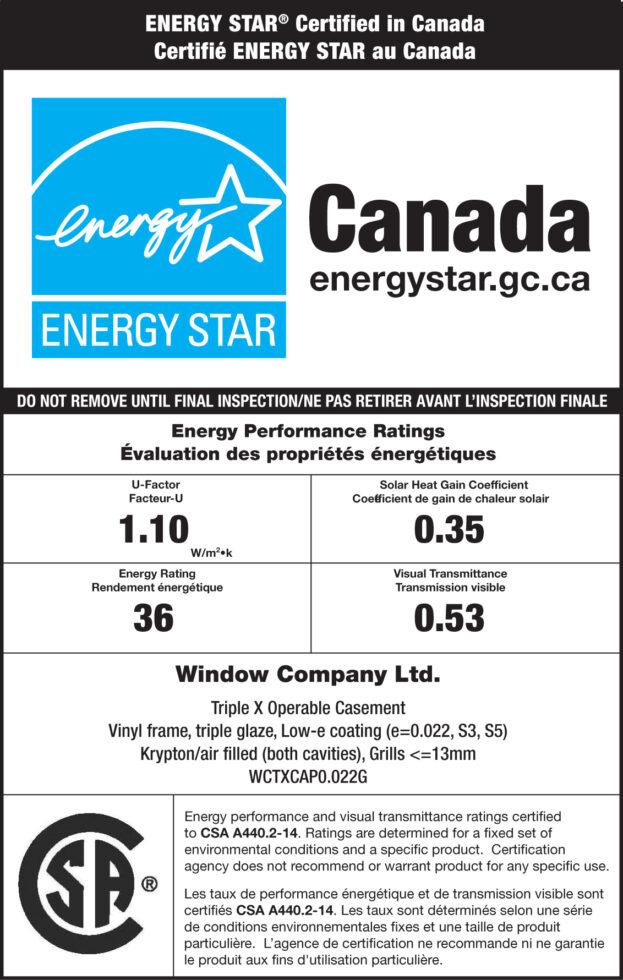
What is A Window Energy Rating and How to Measure It?
These ENERGY STAR®-certified residential products sold in Canada must meet specific U-value, Energy Rating and air-tight efficiency specifications for Version 5.0 dated January 1, 2020.
- U-Factor — an indicator that measures the heat transfer per time per area and per degree of temperature. You can also refer to R-Value here (which describes how well insulation material resists heat flow), but still when it comes to official ratings there will be an U-value on the energy star label and generally ranges from 0.1 (little heat loss) to 1.0 (high heat loss).
- Solar heat gain coefficient (SHGC) —the ratio of solar heat gain to the incident solar radiation. In simpler words – a measure of the solar heat gained through a pane of glass and it ranges from 0 to 1, with 1 having the most solar gain.
- Visible Transmittance (VT): Ranging from 0 to 100, visual transmittance measures the amount of visible light that can pass through the product. A higher value means more light will pass through.
- Air tightness and other standards: Products are also tested in accordance with standards that measure airtightness, watertightness, and strength.
- Energy Rating (ER) — It is an overall measure of how energy-efficient your window or doors is based on all the indicators discussed above. Ranging from 0 to 50, a higher energy rating indicates a more energy-efficient product.
To be recognised as an energy-efficient product by Energy Star, the window or door should have a minimum Energy Rating of 34 with the most efficient products having an ER of 40 or higher.
Energy Star Windows & Doors – Minimum and Maximum Ratings
The following technical specification determines how residential windows, doors, and skylights sold in Canada are certified for the ENERGY STAR® program. This specification is issued by Natural Resources Canada (NRCan).
NRCan has been authorised by the U.S. Environmental Protection Agency (EPA) to promote and administer the ENERGY STAR name and symbol in Canada. A product must meet this specification in order to be promoted as ENERGY STAR certified in Canada.
Energy efficiency requirements for windows and doors are reflected in Table 1 and Table 2 below.
Table 1: U-factor Criteria for Residential Windows and Doors
| Product | Max U-factor (W/m2·K) | Max U-factor (Btu/h·ft2°F) |
| Windows and Doors | 1.22 | 0.21 |
Table 2: Alternate ER Criteria for Residential Windows and Doors
| Product | Min Energy Rating (ER) | Most Efficient Products |
| Windows and Doors | 34 | 40 or higher |
Skylights products must meet or exceed the requirements in Table 2. Dynamic glazing products shall meet or exceed the criteria in Tables 1, 2, or 3 while in the minimum tinted state for chromogenic glazing products or the “fully open” position for internal shading systems.
Table 3: U-factor Criteria for Skylights
| Product | Max U-factor (W/m2·K) | Max U-factor (Btu/h·ft2°F) |
| Skylights | 2.29 | 0.40 |
Test and Technical Certification Requirements
All models shall be certified for their energy performance using the following standards as indicated:
CSA A440.2-14 or A440.2-19 Fenestration Energy Performance and/or ANSI/NFRC 100-14 or ANSI/NFRC 100-17 Procedure for Determining Fenestration Product U-factors and ANSI/NFRC 200-14 or ANSI/NFRC 200-17 Procedure for Determining Fenestration Product Solar Heat Gain Coefficient and Visible Transmittance at Normal Incidence
All models shall be tested to and meet the minimum requirements of the following standards:
- AAMA/WDMA/CSA 101/I.S.2/A440-08 North American Fenestration Standard/Specification for windows, doors, and skylights (NAFS)-08 and its Canadian supplement CSA A440S1-09 and/or
- AAMA/WDMA/CSA 101/I.S.2/A440-11 North American Fenestration Standard/Specification for windows, doors, and skylights (NAFS)-11 and its Canadian supplement CSA A440S1-17
Note: Certification to NAFS and the Canadian supplement is not a requirement.
- All Insulating Glass Units shall be certified using the following standards as indicated:
- ASTM E2190-10 Standard Specification for Insulating Glass Unit Performance and Evaluation and/or CAN/CGSB 12.8-17 Insulating Glass Units Standard
- The model selected for testing or simulation shall be representative of that which is intended to be marketed and labelled as ENERGY STAR.
- Certification for energy performance must be done by an organisation accredited by the SCC for the scope of the product being certified, or, by NFRC.
- Testing to NAFS and the Canadian supplement must be done by an organization accredited by the SCC or other signatories to the Asia Pacific Laboratory Accreditation Cooperation (APLAC) and/or the International Laboratory Accreditation Cooperation (ILAC) Mutual Recognition Arrangement for the scope of the product being tested.
What Energy Efficiency Features Should You Look For in Windows?
Windows, doors and skylights come in a variety of styles, shapes, sizes and performance levels. To meet the 2020 ENERGY STAR® specifications, you should look for these energy-efficient features:
- Double and Triple Pane—the space between panes of glass is what give windows and doors the best thermal insulating power. The larger the gap, the better the insulation.
- Low-E Coating—low emissive coatings help reduce energy gain (heat infiltration) and block damaging UV rays from penetrating your home.
- Argon and Krypton Gas—used to fill the gap between triple-pane windows. Conducts up to 50-percent less heat than air and protects against heat loss and condensation in cold climates.
Should you install new windows based on the climate zone?
In January 2020, Canada simplified its approach to energy-efficient windows by eliminating region-specific requirements. Previously, ENERGY STAR® certification for windows was provided based on climate zones, so homeowners needed to select windows appropriate for their specific area to ensure high energy conservation, comfort and compliance with local rebate programs.
Now, homeowners can rely on a single, rigorous standard that applies coast to coast instead of navigating varying criteria across multiple zones. This means a selected window is either ENERGY STAR® certified or not, regardless of your location in Canada.
This approach aims to increase energy savings nationwide and make it easier for homeowners to buy and install high-performance windows. By ensuring that only the most energy-efficient windows receive certification, homeowners can be confident in their choice, knowing it offers superior insulation, solar heat gain control, and overall energy cost savings, despite their region.
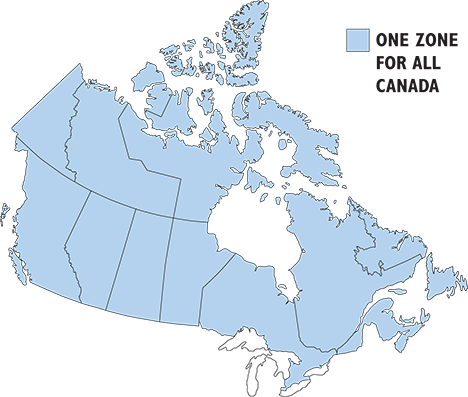
Window and Door Rebates for Energy-Efficient Installations
To encourage Canadians to buy energy-efficient windows, doors and skylights, Natural Resources Canada offers consumer education programs and cost incentives for the purchase of ENERGY STAR®-certified products.
Rebates, loans and other financial incentives vary by province and municipality, but you may be able to save significant dollars on the purchase and installation of windows and doors. In some cases, you may also qualify for bonus savings by doing two or more energy-efficient upgrades.
To make sure you not missing out on any available programs, make sure to read this ultimate guide to all rebates for windows and doors in Canada or use Ecoline’s rebate calculator to estimate your potential savings in seconds.
Wrapping Up
As technology changes and design changes are made, you can expect even more energy-saving window, door and skylight products to become available. With them will come changes to ENERGY STAR® standards to encourage even more research—for reducing energy consumption, greenhouse gas emissions and saving the planet.
Before you begin your home improvement project and purchase replacement windows, doors and skylights, be sure to speak with your contractor/window supplier to make sure they all comply with ENERGY STAR standards. You’ll save money, make your home more comfortable, and increase your home’s future resale value as well.
Ecoline Windows offers ENERGY STAR®-certified windows and doors that meet all energy efficiency requirements. Send us an online request today to discuss your window replacement project.
F.A.Q
What is U-value in windows?
U-value measures how well a window prevents heat from escaping. The lower the U-value, the better the insulation. Windows with low U-values help reduce energy costs by keeping your home warmer in winter and cooler in summer. Look for U-values under 1.2 for optimal efficiency.
What are Energy Star windows?
Energy Star windows meet strict energy efficiency standards set by the government. They minimise heat loss, reduce drafts, and lower energy bills. These windows often feature advanced features like low-E coatings and triple-pane glass, making them ideal for homes in colder climates.
How do I know my climate zone in Canada?
As of 2020, Canada no longer uses climate zones for Energy Star window certification. All certified windows meet a single national standard, ensuring the highest energy efficiency, regardless of location. This simplifies the process – if it’s Energy Star certified, it’s suitable for any part of Canada.
How do I know if my windows are energy efficient?
Check for the Energy Star label and review the window’s U-value and the overall Energy Ratings. According to Energy Star, the minimum rating for a window to be recognised as energy efficient is 34, while the most efficient models have 40 or higher.
What is a triple-pane window?
A triple-pane window has three layers of glass separated by insulating gas fills. This design offers superior energy efficiency, noise reduction, and enhanced comfort. Triple-pane windows are up to 55% more energy-efficient compared to regular untis, making them a top choice for cold climates.
1750 Coast Meridian Rd #102,
Port Coquitlam, BC V3C 6R8
100, 17866 106A Avenue,
Edmonton, AB, Canada,
T5S 1V3
3307 Dunmore Rd SE #12,
Medicine Hat, AB,
Canada, T1B 3R2
2081 Merivale Rd #201, Ottawa, ON, Canada, K2G 1G9
by appointment only
109 Ilsley Ave Unit #3, Dartmouth,
NS, Canada, B3B 1S8




